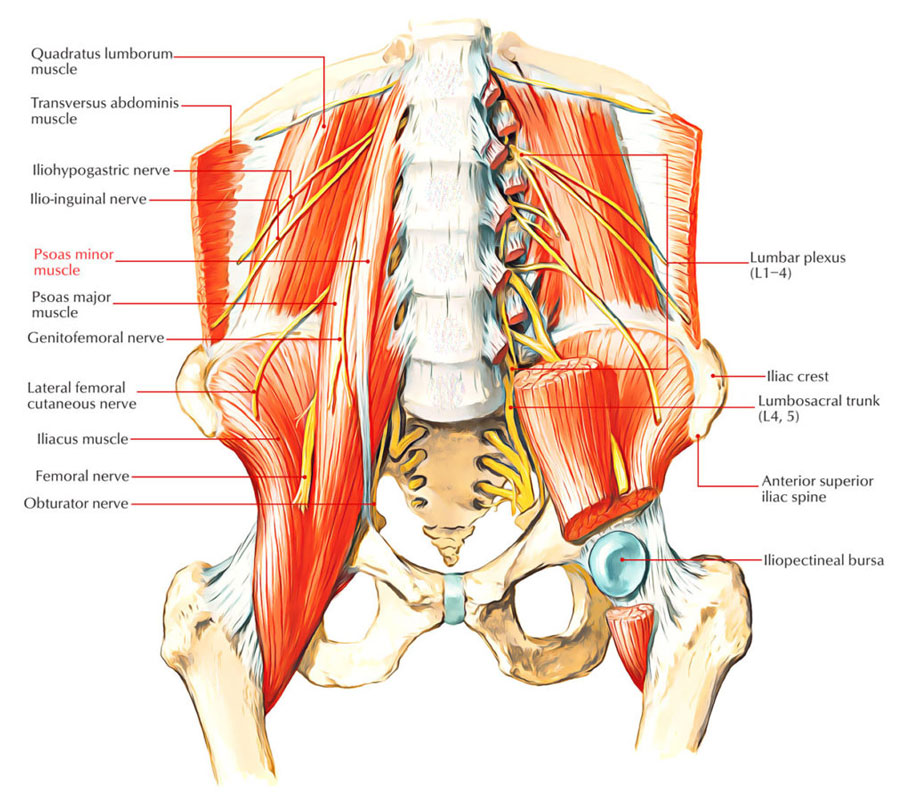Psoas Minor is present in nearly 50% of the population. Whenever existent, it travels downward opposite psoas major. It bears a similarity to the plantaris muscle of the leg in form and shape, and is limited in the abdomen region.

Psoas Minor
Origin
It arises from the side of the intervertebral disc in the middle of T12 as well as LI vertebrae and neighboring portions of their bodies:
- Lateral surfaces of the vertebral bodies of T12, the 12th thoracic vertebra along with L1, the 1st lumbar vertebra.
- Intervertebral disc, in the middle of vertebrae T12 as well as L1.
Attachment
From the site of origin, the muscle runs in front of the psoas major and ends in a long flat tendon, which is inserted into the iliopubic eminence.
Insertion
- After origin, it travels down over the medial margin of the psoas major and also is connected towards the anonymous line as well as the iliopectineal prominence.
- Furthermore, it connects to as well as expands the deep surface of the iliac fascia.
- Occasionally its lowest fibers connect with the inguinal ligament.
Variations
The insertion on the iliopubic eminence occasionally emits within the iliopectineal arch.
Nerve Supply
It is innervated via a branch of LI spinal nerve.
Action
- Psoas minor assists in the flexion a.k.a. bending of the hip.
- It has a smaller role in this movement compared to the bigger psoas major muscle.
- The psoas minor is referred to as a ‘weak trunk flexor’ as a result.

 (59 votes, average: 4.65 out of 5)
(59 votes, average: 4.65 out of 5)